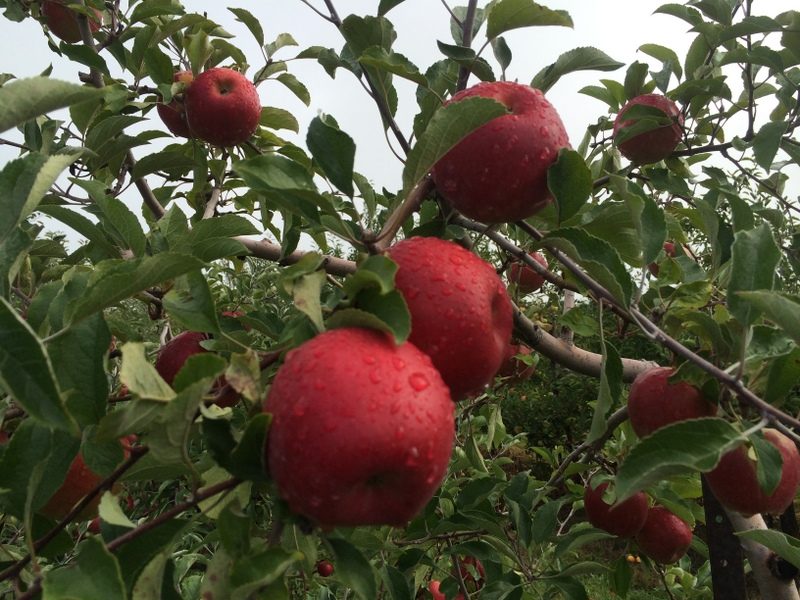
Approximate Ripening: Mid September
Uses: Eating, cooking, excellent pies
Trivia: There’s some controversy about Jonathan’s origins. Most sources agree that it’s a seedling of Esopus Spitzenburg (also available at Rittman), and that it was discovered in Woodstock, Ulster County, NY by Jonathan Hasbrouck in 1826. But there’s an alternate origin story that ties Jonathan to an even earlier discovery in 1804. In it, the Higley family of Connecticut was preparing to move to the uncharted lands of Ohio, which had just gained entry to the Union. Before the Higleys departed their cider mill, Mrs. Rachel Negus Higley gathered some seeds, which she planted in their new Ohio home. She named the resulting fruit Jonathan after her husband. Jonathan enjoyed great popularity when it became commercially available in 1865, but it has become increasingly rare in recent years as orchards rip out their Jonathan trees to make room for apples with longer shelf lives.
Notes: Jonathan is truly one of the classics for connoisseurs. Firm, mostly red skin gives way to creamy, delicate flesh that strikes a perfect balance of tartness without puckering your lips. Eat it out of hand and enjoy a truly great American apple, or try it candied on a stick: Jonathans make superlative caramel apples.
